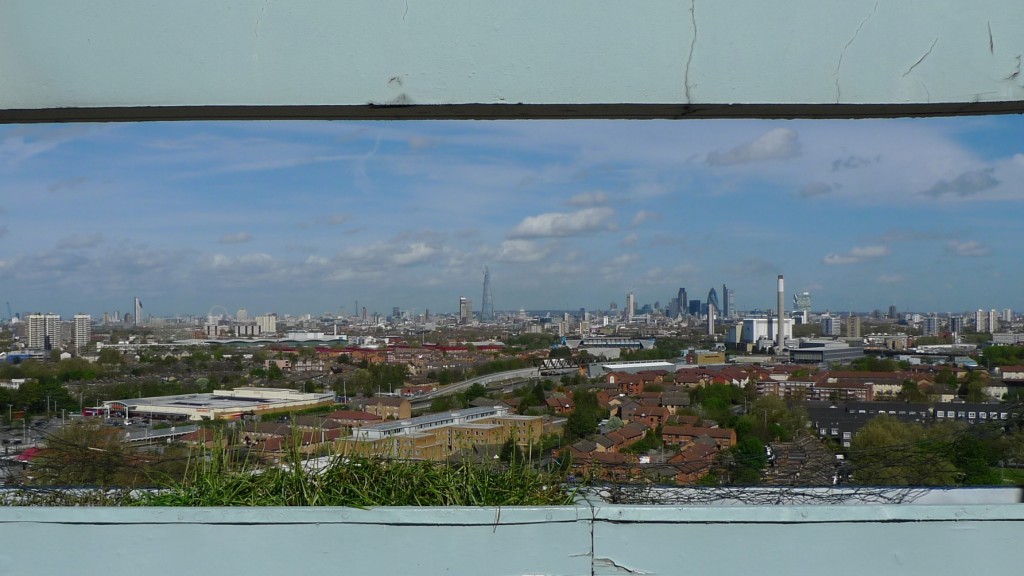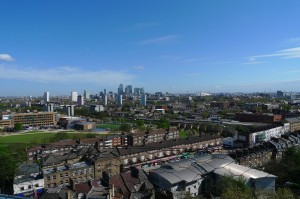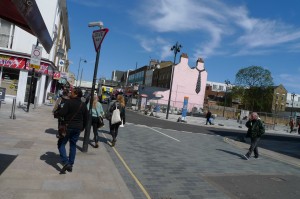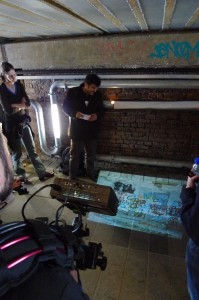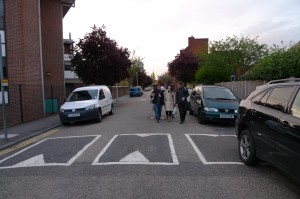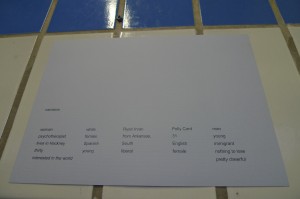
Engaging Tactics, notes on a spring trip to London and some persistant questions
It was late February when my adviser, Erica Lehrer, handed me the call for contributions to a conference that would take place in London later that spring. She was curious about Goldsmiths’ Department of Sociology Methods Lab and thus proposed I could attend to learn more about their work, introduce the work of CEREV, and present my own. The call sounded extremely intriguing, and the idea of going back to London, a city where I had lived for a few a months many lives ago, sealed the exciting deal.
I communicated with the organizers, most of them fellow grad students in the Sociology program at Goldsmiths, before submitting my proposal. I wanted to know a bit more about the context for the conference and confirm whether my participation would indeed be fruitful for all parties involved. This is part of what I said:
“My own work deals with the ongoing processes of memorialization of political violence in Argentina and I am interested in both, analyzing and intervening in them, using ethnographic and participatory research methods as well as audiovisual documentary and site-specific art tactics. I have been developing my dissertation’s methodological framework, which entails what I call ‘performative/collaborative acts of social analysis’. It seems like the conference would be an ideal context for sharing some of my work in progress and discussing my ideas regarding future interventions (I’ll be doing the main portion of my fieldwork during 2013). Could you please let me know if you think that this could be of interest?”
In his generous reply, Christian von Wissel (one of the main organizers) said I should definitely come, and explained a bit more about their process conceiving and organizing the conference:
“The conference topic is by purpose still very broad: tactics can make use of space, collaborations, sound, performance, etc. We are trying to find the spaces needed for “tactic-specific” presentations in or around Goldsmiths college. […] We wanted to be as open as possible in order to encourage submissions from social sciences, art, theatre… The underlying question is always: what can we do – and what are we doing – in order to make our research be responsive to and/or resonate with people? […] As you can see, it is all thought to be a rather practical workshop.”
A workshop that deals with a question that has been, albeit in different iterations, at the core of my own research practice? Sign me up!
And so, on April 28th, with the financial support of CEREV (as well as the Faculty of Arts and Sciences and the Humanities program travel grants) I finally boarded a flight to London.
I had half a day to acclimate to the cold rainy spring weather and explore a bit of New Cross before getting started in what would be one of the most invigorating conferences I’ve attended in the last few years.
Morning coffee and welcome remarks took place in the terrace of the Warmington Tower –a bit of wind, quite a bit of sunshine, and fantastic views of London included (like the image above).
I would never be able to do justice to what transpired during those two days using words so I won’t event attempt to. I will offer a few photos and comments of specific instances instead; visual traces that will hopefully evoke some sense of the diversity of tactics, spaces, and experiences the wonderful team of Goldsmiths’ organizers engaged us with.
Our first foray into the neighborhood took us through the Deptford market area into a wonderful communal space opened up by a group of former Goldsmiths students, the Deptford project.
There, we listened to a presentation on food-like items used as conversation-openers and explanatory tools in difficult health care contexts, and also had our own collaborative/ performative picnic, conceived by Michael Guggenheim and Christian von Wissel. Read their own account of it, here.
After lunch we had a range of presentations/ projections in odd and evocative places, such as a highly transited rail underpass and the haunted corridors of one of Goldsmiths old buildings. The self-made mobile projector was in of itself a pretty cool tactic, too.
Later that afternoon we were directed a do-it-yourself art center, placed at the old Deptford Police Station, where Kata Halasz had set up a site-specific installation addressing issues of race, civil right struggles, and social difference.
A small TV monitor situated in one of the old prison cells played a filmic record of a 1960s civil rights protest in the US and the police repression that ensued. Audio players and headphones were available for the public, each of them playing a different narration of the events (going from simple descriptions of what we see on screen to informed guesses and interpretations) made by quite different persons.
This piece, and our evening sojourn at the old station for one of the roundtables, resonated with last year’s riots and their aftermath. Cuts to social programs and publicly funded community-based art projects are affecting Londoners at many different levels. Exactly the theme addressed by the keynote speaker the following morning in a classroom full of high school students specially invited for the occassion.
There were many more memorable moments and connections made, and at least one heated discussion that left many of us thinking about positionality within academic contexts… Of course not everything worked perfectly, but I do want to acknowledge the dedication of the grad student organizers and helpers involved in making this happen. The flow of events, the food, the walks, the places and people we met on the way, all of these pieces run together almost flawlessly, and that’s no small feat.
If you are interested in learning more about the backstage of the conference, checking out the complete programme and other documents related to its preparation and unfolding, and/or be informed about the latest event in the making, feel free to browse the Engaging Tactics website.
I’m going to keep thinking about some of the same old questions, now invigorated by the experiential knowledge gained and the ideas exchanged during my visit to London (as well as the email and blog exchanges that ensued): How to traverse/ connect academics and communities? How to inhabit these borderlands and make our findings (both theoretical and empirical) speak to and work for different audiences?
Here’s to hoping to encounter some of these wonderful people to discuss tactics again, at some point or another along the way.
Post by Florencia Marchetti.

